Four million acre conservation area stretches from Lakeland to Naples
A 12-county swath of old Florida from Lakeland to Naples is part of a new land conservation effort by the U.S. Fish and Wildlife Service (FWS) to protect vast watersheds, endangered species, and agricultural operations. The National Wildlife Refuge System recently announced establishment of the Everglades to Gulf Conservation Area, which will be the country’s newest refuge.

The proposed conservation area stretches across 4 million acres in southwest and south central Florida west of Lake Okeechobee. In order to preserve this area, the lands can be purchased outright for recreational purposes, or purchased as conservation easements from willing landowners who may continue to farm the land.
The new Everglades to Gulf Conservation Area is the result of decades of work by multiple state and federal agencies and the broader conservation and agricultural community. The Florida Conservation Group (FCG) partnered with the FWS National Wildlife Refuge System, the University of Florida’s Center for Landscape Conservation Planning, and the National Wildlife Refuge Association to provide the scientific foundation to establish the Everglades to Gulf Conservation Area. FCG also worked with U.S. Fish and Wildlife to lead extensive stakeholder outreach efforts.
The region stands out for its tremendous biological diversity and water resources, as well as the number of agricultural landowners who are willing to help save it.

The Everglades to Gulf Conservation Area is home to over 70 federally or state-listed threatened and endangered species, including the Florida panther, Florida scrub jay, Audubon’s crested caracara, Everglades snail kite and sand skink. The ecologically diverse region includes wet prairie and freshwater marshes, forested wetlands, dry prairie and pine flatwoods, scrub/shrub ecosystems, working agricultural lands, and pastures.
Bordering the Everglades Headwaters National Wildlife Refuge and Conservation Area, the proposed refuge includes the watersheds of the Peace River, Myakka River, Fisheating Creek and Caloosahatchee River. The Peace River and Myakka River watersheds are essential for the health of Charlotte Harbor, an Estuary of National Significance and hub of Southwest Florida’s nature-based tourism and economic activity.
Being situated in the heart of Florida’s unique prairie ranching landscape means that landowners representing hundreds of thousands of acres in the region have volunteered to sell their development rights in order to conserve the land. The Everglades to Gulf Conservation Area will allow the FWS to work with landowners to secure conservation easements over ecologically sensitive lands, protecting those lands in perpetuity while allowing continued agricultural operations.
Land can also be purchased outright to allow for public recreational uses. Landowners can also partner with the state’s Florida Forever and the Rural and Family Lands Protection Program, which allows the state and federal governments to maximize the conservation footprint and leverage state and federal dollars. This partnership and conservation area will allow farmers and ranchers in Florida to be stewards of the land and provide food for the nation.
The time is now to protect vast landscapes like the Everglades to Gulf area due to continued population growth pressures. Now that federal funding is also available and can complement state funding, we are extremely fortunate. Florida has continued its long-time financial commitment to conservation, and we hope Congress supports the effort with robust funding in turn.
Congress has the opportunity to pass a full-year funding bill rather than a short-term funding extension, which slows and stops conservation initiatives. Florida stakeholders – farmers, ranchers, conservation groups, and recreation groups – have worked together to support the Everglades to Gulf Conservation Area. Our representatives in Congress should provide stable, long-term annual funding to the FWS so it can wisely steward taxpayer funding to conserve important land and maintain a thriving agricultural and recreation economy now, while we can.
A bipartisan Congressional Wildlife Refuge Caucus has formed and is pushing for stable, long-term wildlife refuge funding. Ask your Florida congressman to join in support of this effort to help ensure the Everglades to Gulf Conservation Area becomes a refuge.
Julie Morris is executive director of the Florida Conservation Group. Florida Conservation Group engages in conservation science, planning, outreach, and land protection. The organization assists landowners with conservation easement and incentive programs to ensure that Florida’s highest-priority lands are identified and protected. Landowners in this region are encouraged to connect with FCG to learn how to conserve their land.
